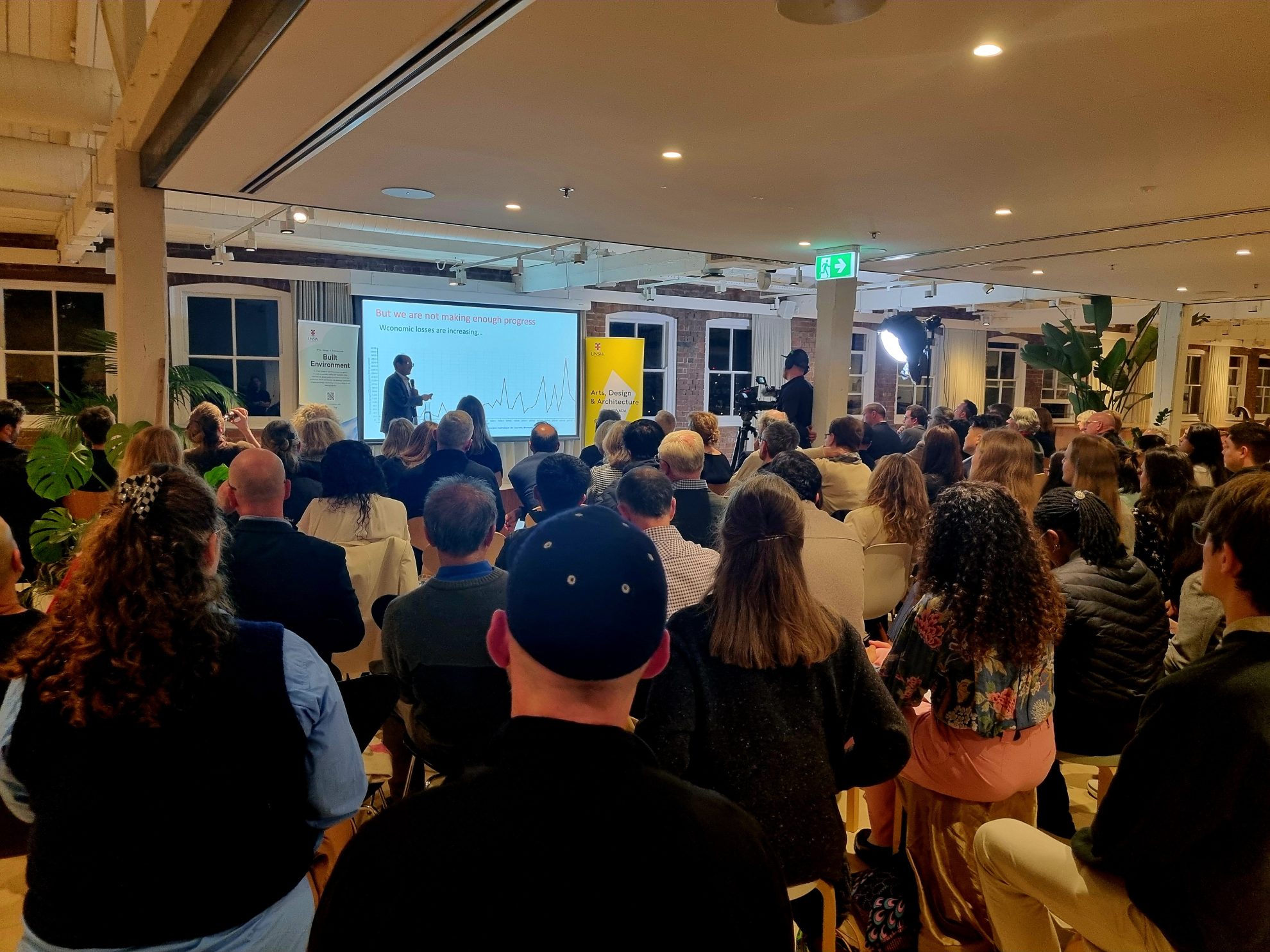Invisible wins, unseen futures: rethinking resilience in design

Conversations about disaster resilience are often dominated by statistics and technical detail. This week’s UNSW Judith Neilson UTZON Lecture at COX Sydney could have followed that path. Instead, Kamal Kishore spoke with clarity and optimism, sharing complex ideas in a way that felt practical and hopeful. As Special Representative of the UN Secretary-General for Disaster Risk Reduction and Head of UNDRR – as well as a trained architect – Kamal reminded us that resilience is not only about structures, but about people and systems, and that architects have an important role to play in shaping both.
Listening to Kishore, I was struck by how directly his reflections connect to our work at COX. Resilience cannot sit on the edges of our profession — it must be central to how we design communities, infrastructure and public places.
These are my five takeaways:
1. We don’t really know what change looks like – but we can’t let that stop us.
The future is unpredictable, shaped by forces we can’t fully anticipate. Uncertainty is no excuse for inaction. As architects, we should treat this is as a call to design for adaptation – ensuring the built environment can evolve over time to meet new challenges.
Special Representative of the UN Secretary-General for Disaster Risk Reduction and Head of UNDRR, Kamal Kishore
“Architecture doesn’t like maintenance or adaptation, because it’s built on the assumption of a static climate – we have to reinvent that.”
2. Progress is often invisible.
Despite the great progress made, disaster risk reduction wins are mostly unspoken. Designing for disaster preparedness and resilience saves lives – but rarely makes headlines. In architecture, we must value these invisible wins as much as we do visibility, beauty and immediate functionality.
3. The next frontier is saving livelihoods.
Saving lives is critical – but designing resilient communities must also protect homes and infrastructure – ensuring people can recover their livelihoods after crisis.
4. Design must value maintenance.
Maintenance cannot be left for later. It must be part of the cost–benefit equation from the outset, written into briefs and understood as a design responsibility. Projects do not end on opening day; they require stewardship. To do this – we need better codes, stronger regulations and more accountability when it comes to preparing the built environment – particularly ageing buildings – to withstand disasters. Kishore put it well when he said, “If we don’t have system-level reform, this is not going to happen voluntarily. It must become an industry standard.”
5. Infrastructure is community resilience.
I see these lessons come to life in our public transport work — from Parramatta Light Rail through to our work with Sydney Metro. These projects are not only about moving people, but about building safe, adaptable and inclusive public spaces that strengthen communities.
Kishore’s lecture was a reminder that while we can’t control the future, we can choose how we design for it. That means embedding adaptability, equity and care into every project, valuing invisible wins alongside visible ones, and keeping people and livelihoods at the centre of resilience.